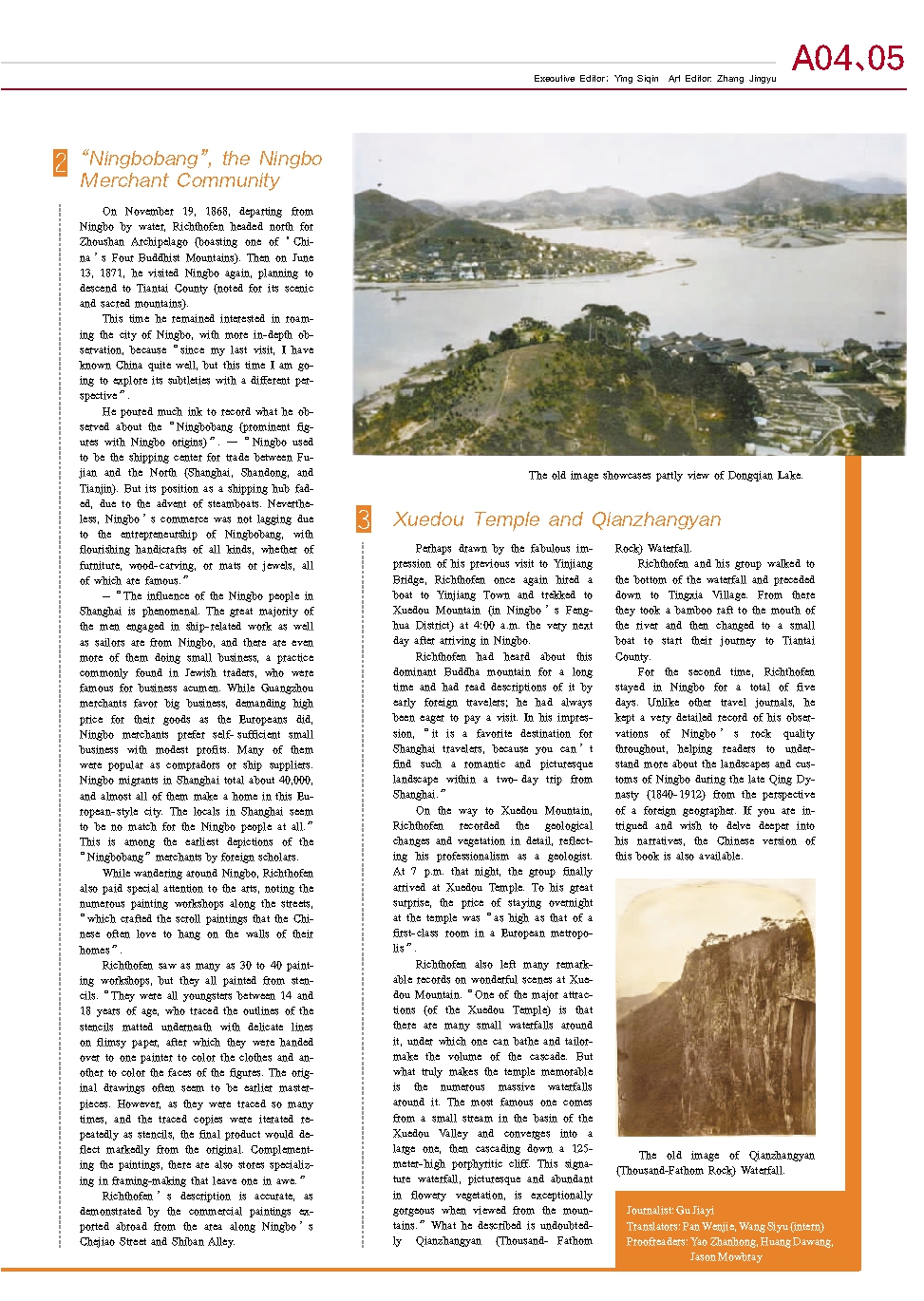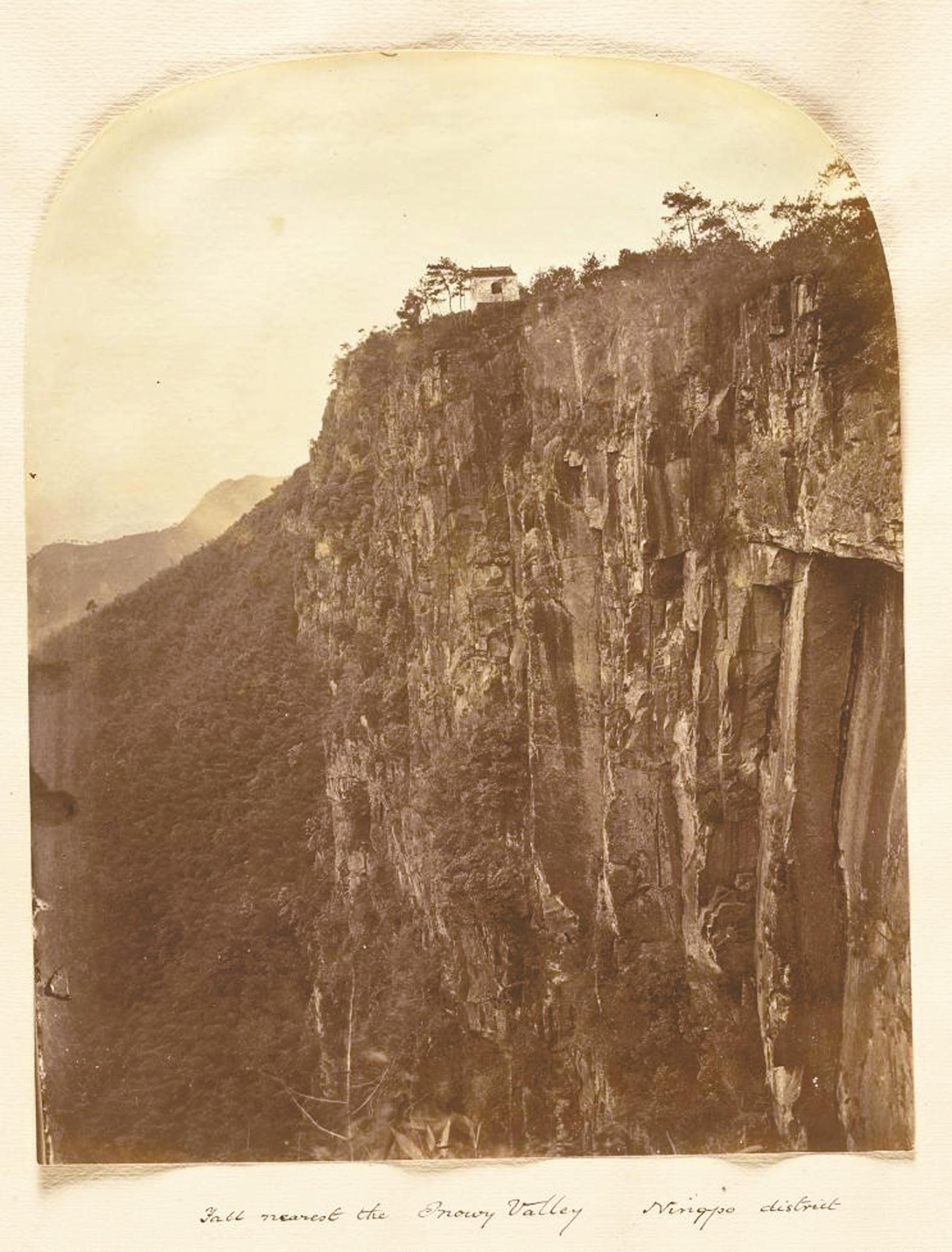Perhaps drawn by the fabulous impression of his previous visit to Yinjiang Bridge, Richthofen once again hired a boat to Yinjiang Town and trekked to Xuedou Mountain (in Ningbo’s Fenghua District) at 4:00 a.m. the very next day after arriving in Ningbo.
Richthofen had heard about this dominant Buddha mountain for a long time and had read descriptions of it by early foreign travelers; he had always been eager to pay a visit. In his impression, “it is a favorite destination for Shanghai travelers, because you can’t find such a romantic and picturesque landscape within a two-day trip from Shanghai.”
On the way to Xuedou Mountain, Richthofen recorded the geological changes and vegetation in detail, reflecting his professionalism as a geologist. At 7 p.m. that night, the group finally arrived at Xuedou Temple. To his great surprise, the price of staying overnight at the temple was “as high as that of a first-class room in a European metropolis”.
Richthofen also left many remarkable records on wonderful scenes at Xuedou Mountain. “One of the major attractions (of the Xuedou Temple) is that there are many small waterfalls around it, under which one can bathe and tailor-make the volume of the cascade. But what truly makes the temple memorable is the numerous massive waterfalls around it. The most famous one comes from a small stream in the basin of the Xuedou Valley and converges into a large one, then cascading down a 125-meter-high porphyritic cliff. This signature waterfall, picturesque and abundant in flowery vegetation, is exceptionally gorgeous when viewed from the mountains.” What he described is undoubtedly Qianzhangyan (Thousand-Fathom Rock) Waterfall.
Richthofen and his group walked to the bottom of the waterfall and preceded down to Tingxia Village. From there they took a bamboo raft to the mouth of the river and then changed to a small boat to start their journey to Tiantai County.
For the second time, Richthofen stayed in Ningbo for a total of five days. Unlike other travel journals, he kept a very detailed record of his observations of Ningbo’s rock quality throughout, helping readers to understand more about the landscapes and customs of Ningbo during the late Qing Dynasty (1840-1912) from the perspective of a foreign geographer. If you are intrigued and wish to delve deeper into his narratives, the Chinese version of this book is also available.



